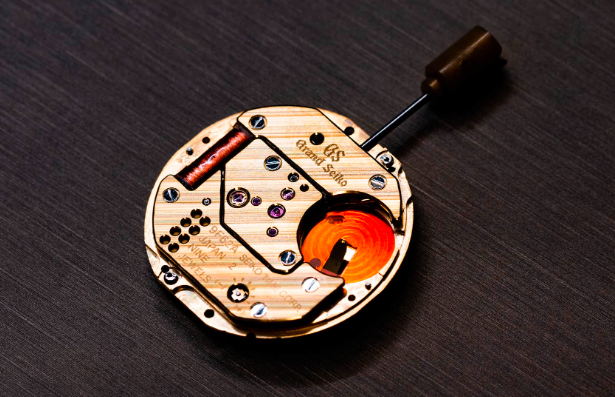Swiss Movement Watches: A Comprehensive Guide to Excellence

Swiss movement watches stand as a symbol of precision, craftsmanship, and luxury in the world of horology. Their unparalleled reputation is built upon centuries of tradition and technological advancements that continue to set the benchmark for high-quality timepieces. This article delves into the essence of Swiss movement watches exploring their history, the intricacies of their design and manufacturing, and why they are esteemed by collectors and enthusiasts worldwide.
1. Understanding Swiss Movement Watches
Swiss movement watches are renowned for their precision and craftsmanship. The term “Swiss movement” refers to the internal mechanism of the watch, designed and manufactured in Switzerland, which adheres to stringent Swiss quality standards. These movements are crucial to the watch’s performance, influencing accuracy, durability, and overall functionality.
Core Characteristics:
- Precision: Swiss movements are known for their exceptional timekeeping accuracy, often exceeding international standards.
- Craftsmanship: Each Swiss movement reflects meticulous craftsmanship, combining advanced technology with traditional watchmaking techniques.
- Innovation: Swiss watchmakers are at the forefront of horological innovation, continually improving movement designs and technologies.
2. A Historical Overview of Swiss Watchmaking
Swiss watchmaking has a rich history that spans over 500 years, contributing significantly to the development of modern horology. The evolution of Swiss movements reflects major milestones in watchmaking technology and craftsmanship.
Early Beginnings:
- 16th Century: The roots of Swiss watchmaking can be traced back to Geneva, where early clockmakers and watchmakers began crafting timepieces. The region’s favorable conditions for horological development led to the establishment of a tradition of precision and quality.
- 17th Century: During this period, Swiss watchmakers made significant advancements in mechanical watch technology, including the development of intricate movements and improved timekeeping mechanisms.
Key Developments:
- 19th Century: The industrial revolution brought about mass production techniques and technological innovations that transformed Swiss watchmaking. This era saw the rise of major Swiss watch brands and the establishment of Switzerland as a global leader in horology.
- 20th Century: The introduction of quartz technology in the 1960s revolutionized the industry, offering unprecedented accuracy and reliability. Swiss watchmakers adapted to this change by integrating both quartz and mechanical technologies, maintaining their reputation for excellence.
Read also: Exploring Japanese Movement Watches: Innovation, Precision, and Affordability
3. Types of Swiss Movements
Swiss movements come in various types, each designed to meet specific needs and preferences. Understanding these types helps in selecting a watch that aligns with your requirements.
1. Mechanical Movements:
- Manual Mechanical Movements: These require manual winding by the wearer. Manual mechanical watches are appreciated for their traditional craftsmanship and intricate engineering, often found in luxury timepieces.
- Automatic Mechanical Movements: Also known as self-winding movements, these use the motion of the wearer’s wrist to wind the watch. They combine the convenience of automatic winding with the elegance of mechanical design.
2. Quartz Movements:
- Analog Quartz Movements: These utilize a quartz crystal to regulate timekeeping, providing high accuracy with minimal maintenance. Analog quartz watches are powered by batteries and are known for their reliability.
- Digital Quartz Movements: These incorporate quartz technology with digital displays, offering features like alarms, backlighting, and multiple time zones. Digital quartz watches cater to modern preferences for functionality and convenience.
3. Hybrid Movements:
- Quartz-Mechanical Movements: Combining quartz and mechanical elements, these movements offer a blend of precision and traditional watchmaking. They provide the accuracy of quartz with the aesthetic appeal of mechanical design.
4. The Crafting Process of Swiss Movements
The creation of Swiss movements involves a sophisticated and detailed process that blends advanced technology with traditional craftsmanship.
1. Design and Engineering:
- Concept Development: Designers and engineers collaborate to create detailed plans and prototypes for new movements. This stage involves defining performance criteria, aesthetic features, and technological innovations.
- Component Design: Each component, including gears, springs, and escapements, is meticulously designed to ensure optimal performance and durability.
2. Manufacturing:
- Component Production: Components are produced using advanced machinery and traditional techniques. Precision in manufacturing is crucial to ensure that each part meets rigorous quality standards.
- Assembly: Skilled watchmakers assemble the components with exceptional care, ensuring that each part functions harmoniously. This process requires a high level of expertise and attention to detail.
3. Testing and Quality Control:
- Accuracy Testing: Swiss movements undergo extensive testing to verify their timekeeping accuracy. Tests are conducted under various conditions to ensure consistent performance.
- Durability Testing: The movement’s resistance to shocks, temperature variations, and other environmental factors is tested to ensure long-term reliability.
8. Conclusion
Swiss movement watches epitomize the pinnacle of horological excellence, combining precision, craftsmanship, and innovation. The rich history and advanced technology behind Swiss movements contribute to their esteemed reputation in the watch industry. Whether you seek a reliable everyday timepiece or a luxurious statement piece, Swiss movement watches offer unparalleled performance and style.
By understanding the intricacies of Swiss movements, their types, and the factors to consider when selecting a watch, you can make an informed decision and invest in a timepiece that reflects the highest standards of quality and craftsmanship. Swiss movement watches continue to set the benchmark for excellence in watchmaking, ensuring that each timepiece is a testament to the enduring legacy of Swiss horology.







